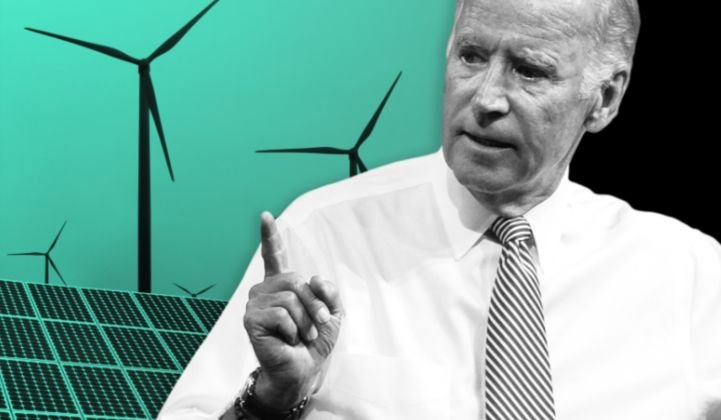In a recent development, the Biden administration has announced its decision to scale back new climate regulations aimed at enforcing emissions cuts from cars and power plants.
In a recent development, the Biden administration has announced its decision to scale back new climate regulations aimed at enforcing emissions cuts from cars and power plants.
Despite this move, the administration asserts that it will have a negligible impact on its overarching goal to halve greenhouse gas pollution this decade. However, experts suggest that the success of this claim is contingent upon the parallel strategy of utilizing taxpayer subsidies to drive a significant deployment of renewable energy installations.
Mike O’Boyle, senior director for electricity at research firm Energy Innovation, emphasized the necessity of an extraordinary and coordinated effort to meet the clean energy targets essential for achieving the U.S. climate goals. President Joe Biden has committed to aggressive decarbonization efforts as part of global initiatives to combat climate change, relying on a blend of regulation and subsidies.
Nevertheless, recent decisions by the Biden administration to ease auto emissions standards and exempt existing natural gas-fired power plants from CO2 curbs have drawn scrutiny.
These decisions underscore the pressure faced by the administration from industry stakeholders, particularly in the run-up to the November election. With the transport and power sectors collectively responsible for half of the country’s greenhouse gas emissions, the perception of heavy-handed regulation could potentially impact Biden’s reelection prospects.
Climate researchers have concurred with official projections from the Environmental Protection Agency (EPA), suggesting that the changes in regulations may not significantly impede the U.S. goal of halving national emissions by 2030.
Amanda Levin, director of policy analysis at the Natural Resources Defense Council, highlighted that despite the weakening of the EPA vehicle rule and the removal of existing gas plants from the EPA power plant rule, substantial emissions reductions are still anticipated.
Of greater importance to the U.S. decarbonization objective is the pace at which developers can establish zero-emissions power generation and integrate it into the grid. This effort is crucial for supporting the electric vehicle (EV) fleet and could render certain regulatory measures redundant.
To accelerate progress in these industries, Biden aims to leverage lucrative subsidies embedded in the approximately $400 billion Inflation Reduction Act (IRA).
According to O’Boyle, the EPA rules function more as a backup to the IRA. Before the IRA’s passage in 2022, the U.S. was only projected to reduce emissions by 25%-28% by 2030. However, analyses conducted by the NRDC and the Rhodium Group indicate that the U.S. is now on track to achieve a 42% reduction in greenhouse gas emissions by 2030.
Nonetheless, addressing the remaining gap poses challenges. The U.S. solar and offshore wind manufacturing industries are advocating for additional support beyond what is provided in the IRA to ensure the feasibility of their investment plans. Moreover, challenges related to permitting and constructing transmission lines necessary for connecting new power generation to consumers need to be addressed.
Approximately 2,000 GW of renewable generation and energy storage are in regional grid interconnection queues across the United States, with projects incentivized by the IRA’s tax credits facing lengthy connection timelines. Efforts by the Federal Energy Regulatory Commission and the Energy Department to expedite interconnection processes and expand transmission infrastructure are underway.
Levin emphasized the role of states in filling the gap through strengthened renewable energy targets and EV policies, particularly as IRA-driven investments materialize across various states. She highlighted this as a significant aspect of the overall strategy to achieve the U.S. climate objectives.
As the Biden administration navigates regulatory challenges and strives to accelerate renewable energy deployment, the efficacy of its approach will remain under close scrutiny in the ongoing battle against climate change.
